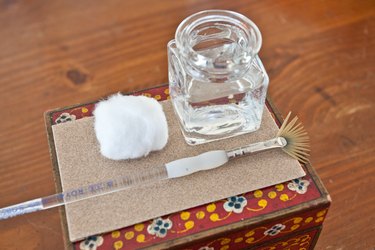
Varnish can be used to protect, preserve, and enhance paint. With all the modern advances in coatings -- polyurethane, shellac, urethane, or varnish -- some confusion about formula is to be expected. Most professionals agree that water-based varnish is the best product to use over paint.
Water-Based Formula
Video of the Day
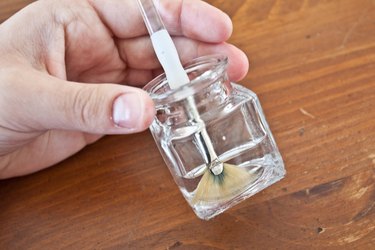
Varnish is more durable than paint and imparts luster to painted surfaces. When applied over previously painted handrails, furniture, steps, or other woodworking projects, varnish forms a protective layer that allows paint to show through. Most clear-coat products yellow over time, due in part to oil-based formulas that contain volatile organic compounds. Products that contain VOCs are considered health hazards. Water-based varnish doesn't contain VOCs and will not yellow like oil-based clear-coat products. Water-based varnish is also sometimes referred to as water-based urethane, though the products may have slightly different formulas. They both perform the same duties.
Video of the Day
Surface Preparation
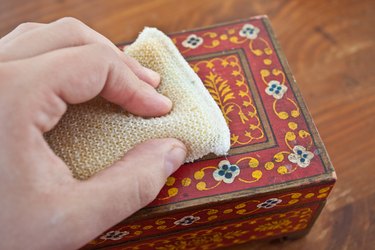
To get a smooth coat of varnish, the underlying paint surface must be clean and smooth. If the surface is grimy or dirty, wash it off with a soapy sponge and allow it to dry. Preparation should also include sanding the painted surface lightly with 100-grit sandpaper to rough it up so that varnish will adhere better. If you see flaking paint, use a wire brush to remove the loose particles, and then continue with the sandpaper until the surface feels smooth to the touch. Removal of paint isn't necessary unless it's flaky or loose. If the wire brush won't take it off, don't force it.
Primers
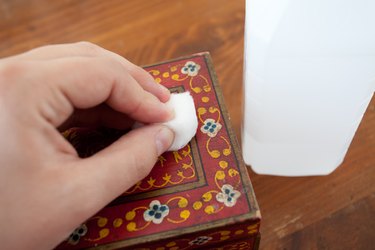
Varnish will not adhere properly to oil-based paint without first adding a primer. If you're dealing with an older painted surface, the paint is often oil-based. To determine whether the paint is oil-based, test it by rubbing a small area with a cotton swab dipped in alcohol. If the paint rubs off, it's likely oil-based and requires a water-based primer before applying varnish. If you can't determine whether you're dealing with oil-based or water-based paint, simply apply the primer anyway. Adding a primer over water-based paint won't hurt.
Gloss
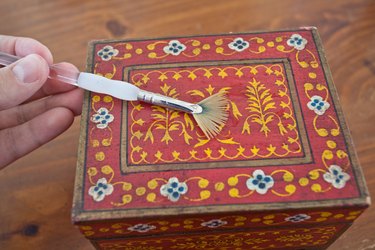
Choose your gloss wisely. High-gloss varnish is exactly what it sounds like. It adds a glossy sheen to the painted woodwork. Use it for a contemporary look. Medium-gloss varnish has some gloss, but not enough to catch the eye. Low-gloss or satin finish is for retaining the older look of the paint, or for more of an antique finish.
Spray or Brush
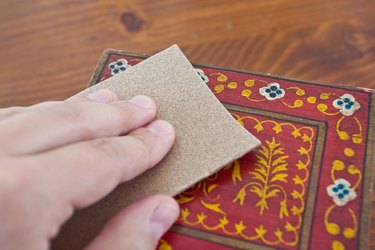
A smooth finish is doable with a paint brush if you're experienced, but the best finishes are typically sprayed on. For most smaller jobs, an aerosol can of water-based varnish will do the job. Hold the can about 8 inches from the surface at about a 30-degree angle. Spray overlapping bands of varnish to coat the surface lightly. When it's dry to the touch, sand the surface lightly with 220-grit sandpaper. If the surface is carved, detailed, or has tight corners you can't reach with sandpaper, use fine-grit steel wool. Be careful when sanding corners and edges; it's easy to sand through the paint in these locations. Add up to three more coats for a deeper gloss and better protection.